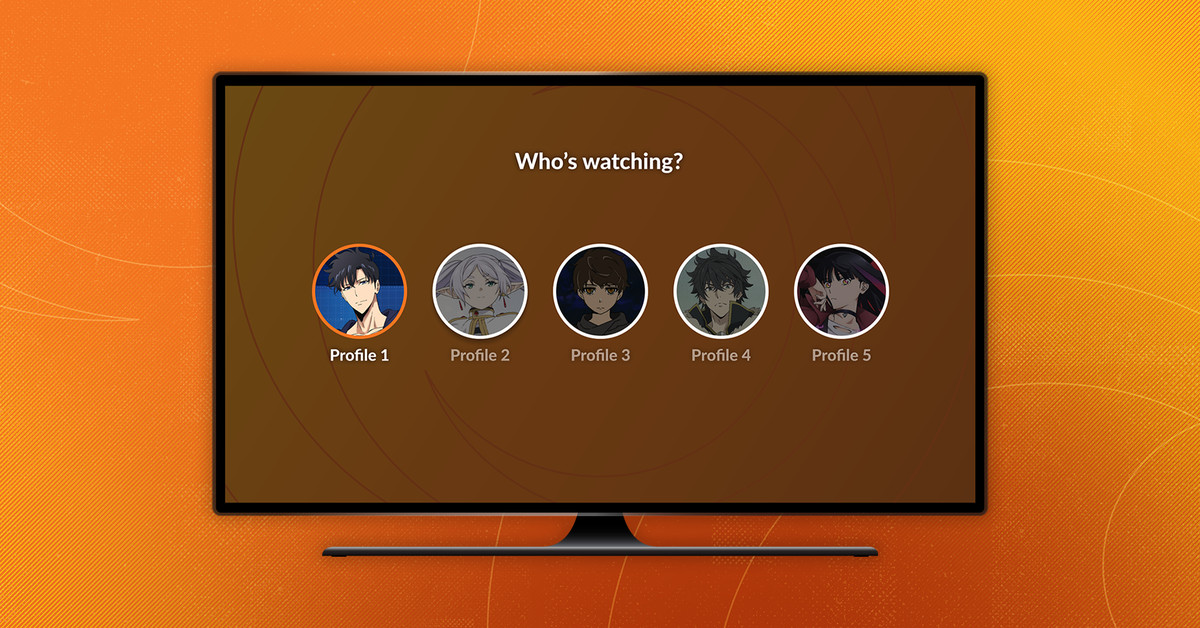2023 kicked off with Netflix CEO Ted Sarandos reiterating that in spite of the success Rian Johnson’s crowd-pleasing mystery-comedy Glass Onion had in its brief theatrical release, Sarandos had no regrets about not putting it into more theaters. The release functioned as it was meant to, as a promotional campaign for the movie’s availability on streaming. In other words: Netflix is not in the movie-release business, it’s in the Netflix business. And its business model does not typically involve anyone having one of their best movie-theater experiences of the year.
And yet that’s what I got from Netflix in October 2023. At the Paris Theater, a one-screen New York City movie house, I got the best tickets I could for a sold-out screening, and spent two absolutely rapt hours watching David Fincher’s The Killer, which chronicles, with ironically clockwork precision, the old movie standby of a botched assassination. The rhythms of its editing, the enveloping Fincherian color scheme, and the crisply brutal punch of its sole major fight scene were all especially satisfying on what Nicole Kidman’s AMC ad calls a “huge silver screen.” (And yes, there was “sound that I can feel”; the theater just upgraded to a Dolby system.)
:no_upscale()/cdn.vox-cdn.com/uploads/chorus_asset/file/25062981/MATZ_R1_48_20230510t_v15_DoVi_20230805.0102755_CC2.jpg)
But The Killer didn’t play at Nicole Kidman’s AMC. It did turn up at some Regal and Cinemark theaters, but it’s hard to say how many, because it was only in theaters for a couple of weeks, during which none of its box-office totals were reported, including the usual statistics like screen count and per-screen average. For most people, The Killer was only a theatrical release in theory. In reality, it’s a Netflix movie.
In six months or so, the streaming company might release a vague statement about The Killer’s success that suggests an estimate of how many people actually watched it. Meanwhile, it’s there for subscribers, ready to be watched whenever and however, possibly autoplaying after you finish another movie with the word “kill” in the title, even if you’ve already fallen asleep.
Unless Netflix is conducting a promotional event like that Glass Onion exception, the company hardly seems to notice that its own theatrical releases exist. (Once, the company accused me of breaking embargo by writing about a movie five days after it was released in a few theaters, but before it hit the streaming service — meaning anyone in New York City could pay $15 to watch it and write whatever they wanted about it.) For Netflix, most theatrical releases seem to be a formality to placate filmmakers or qualify movies for the Academy Awards, not a way to get people actually watching its movies. It’s paperwork.
In spite of itself, Netflix kept accidentally producing great theatrical experiences in 2023 — for me, anyway, if not necessarily for many other people.
:no_upscale()/cdn.vox-cdn.com/uploads/chorus_asset/file/25115802/MAYDEC_11_01_2022_FD_0149R.JPG)
The Killer was a New York Film Festival title, as was the wonderful May December, which also played Manhattan for a few weeks before hitting the service. Seeing a handful of excellent Netflix-funded titles on the big screen during NYFF has become an odd ritual for critics in recent years, encompassing movies like The Irishman, Marriage Story, The Ballad of Buster Scruggs, The Power of the Dog, and Roma. On the other end, I’ve watched the likes of The School for Good and Evil just like most people probably did: from my couch, while distractedly pawing at my phone to keep myself from nodding off. That disparity faces a lot of critics, or anyone else privileged enough to attend film festivals. (Or unlucky enough to watch The School for Good and Evil.)
At the same time, I have a peculiar compulsion to seek out Netflix movies in theaters when possible, sometimes just because their availability in that format is so rare that it becomes a novelty act. In the past, outside of the above movies from Martin Scorsese, Noah Baumbach, Alfonso Cuarón, and so on, this has not paid handsome dividends. Did I enjoy Red Notice and The Gray Man marginally more in theaters than I would have at home, simply out of gratitude that I was able to get out of the house, watch charismatic stars on the big screen, and take the excuse to eat Twizzlers? Yes, probably. Were the Twizzlers the best part of those experiences? Also yes.
But in 2023, my idiotic hobby of paying an extra $25 to see a movie I’ve already paid for once led me to an unexpected realization: Netflix has curated a solid group of big-screen experiences, just like an old-fashioned movie studio! Granted, Netflix released about 100 movies in 2023, and I did not — could not! — watch all of them, either at home or in theaters. Many of those I did watch, including Your Place or Mine, You People, The Mother, Fair Play, Love at First Sight, and The Out-Laws, were middling to bad. This even includes one of Netflix’s Oscar hopefuls, Rustin, which I dutifully trekked to see at a real movie theater. (This time, the candy didn’t help.)
:no_upscale()/cdn.vox-cdn.com/uploads/chorus_asset/file/25172264/RSTN_20211018_05920_R_f.jpg)
However, I also ventured out to the Paris for Extraction 2, and found its showoff-y centerpiece, a 21-minute multi-location action sequence shot to look like a single take, pretty damn exhilarating when screened in a proper theater. Something about that kind of showmanship benefits from a little extra presentational heft. In a theater, Extraction 2 felt more like the kind of muscular action throwback that director Sam Hargrave was trying to achieve — a summer-movie spectacle that actually delivers pretty well outside of the living room. I don’t think it was a coincidence that I enjoyed it a lot more than its predecessor, which I saw at home.
Similarly, Murder Mystery 2 isn’t a great movie even by Adam Sandler standards, but it’s a lot funnier and more polished-looking than plenty of movies from his big-screen days, featuring genuine location shooting that isn’t confined to a prefab resort. Perhaps more amazing, Netflix put out an even better Sandler movie later in 2023. I take my 8-year-old daughter to the movies regularly, and at an in-person screening of Leo, I think we both felt catharsis at a litany of jokes about goofy elementary schoolers and their strict teacher, and delighted at how unexpectedly relatable we both found this movie where the Sandman gives voice to an elderly iguana.
Leo wasn’t the company’s only strong 2023 animated offering, either: At Nimona, I saw my kid laugh maniacally at mayhem caused by the title character, and cry real tears at a moment of self-sacrifice. I’ve rarely seen her so locked into a movie’s range of emotions.
More recently, I surfed a wave of bad advance word to one of the few commercial showings of Rebel Moon Part One: A Child of Fire, again at the Paris. This was also, in its way, a transcendent theatrical experience, as I allowed the movie’s enthusiastic absurdities to wash over me, inexplicably projected on 70mm celluloid. Zack Snyder’s constant use of slow motion, when photographing former dancer Sofia Boutella as she delivers stabbings, punches, and extra-loud laser blasts, takes on a kind of grandeur that a lot of people seemed to get from 300. In the dark of the theater, Rebel Moon produced a kind of junk-culture rapture that may be possible at home, but doesn’t ascend so easily.
:no_upscale()/cdn.vox-cdn.com/uploads/chorus_asset/file/24707444/FL_RebelMoon_2.jpg)
So, let’s see: That’s an R-rated action movie, a comic-caper star vehicle, two very different animated features for families, a space-fantasy epic, and auteur-driven projects from David Fincher and Todd Haynes. Not the most robust lineup of theatrical releases in sheer numbers, but about as well-rounded as you can expect from a major studio. (OK, Netflix could have used one good horror movie in there.) I don’t think it’s just my movie-addled brain, either, noticing Netflix’s potential outside the living room. Plenty of online cinephiles reported having a ball at those crowded theaters playing Glass Onion. May December and The Killer certainly play well to a certain in-person crowd as well.
The problem, though, is that Netflix seems only faintly aware of when it has one of the year’s best movie theater lineups on hand. (Maybe not entirely unaware: It prioritized awards-qualification theatrical runs for these movies, which suggests something about them struck the company as more worthwhile than, say, The Kissing Booth 3.) These de facto pop-up experiences point to a chilling future where moviegoing is a niche activity — a novelty for the superfans obsessive enough to insist on seeing the new Zack Snyder run through an old film projector.
So by paying extra to watch Netflix productions in a movie theater, am I essentially moviegoing at the end of the world, tricking myself into paying an old-fashioned amount of attention to something as disposable as Murder Mystery 2?
That is the danger of watching Netflix movies in public, beyond risking giggles when that familiar logo (even in its faux-prestige, non-tudum version) incongruously materializes on Nicole’s huge silver screen. When a Netflix movie doesn’t work in the theater, something about it feels ineffably more off than in the usual failed big-screen attractions.
Maybe it’s the brain sensing and rejecting some kind of innate Netflixiness — that unnatural crispness, hollow dialogue, and/or baggy run time — that makes even some of the streamer’s biggest films feel a bit like movie-within-a-movie fakery. And while Netflix deserves credit for funding a lot of risky projects for great filmmakers, other companies do this without leaving public exhibition out to dry. So just praising Netflix for sometimes releasing good movies would be as shortsighted as condemning the company for its TV-movie-level worst offerings.
:no_upscale()/cdn.vox-cdn.com/uploads/chorus_asset/file/25172497/Rebel_Moon___Part_One__A_Child_of_Fire_n_02_00_04_12_R2.jpg)
Yet it’s exactly that prickliness, that lack of certainty, that’s made Netflix’s theatrical experiences so resiliently special. It is kind of dumb to pay to see a Netflix movie in a theater a week before it’s rolled into the price of your subscription at home. It is kind of ridiculous to watch a 70mm print of Rebel Moon, a movie that was digitally shot and finished. It is kind of quixotic to venture into the world to watch an Adam Sandler movie that even Sandler himself would probably prefer to see from the comfort of his home.
You have to want to do these things; you have to want to risk feeling like the unnamed assassin in Fincher’s The Killer, calmly proceeding through the routine that’s worked for him in the past, confident that it won’t fall to pieces, even in the face of potential screw-ups. That wanting has always been part of moviegoing. It’s what keeps theaters alive, even given all the reasonable concerns people have about the ways in-person moviegoing impacts their safety, budgets, and personal convenience.
But it’s odd to see a business simultaneously giving people such strong reasons to return to theaters, and discouraging them from doing so. Movie theaters faced a lot of existential threats in 2023, but maybe none quite so profound as the multi-billion-dollar company making great movies, but investing all its resources in the business of keeping people at home.








